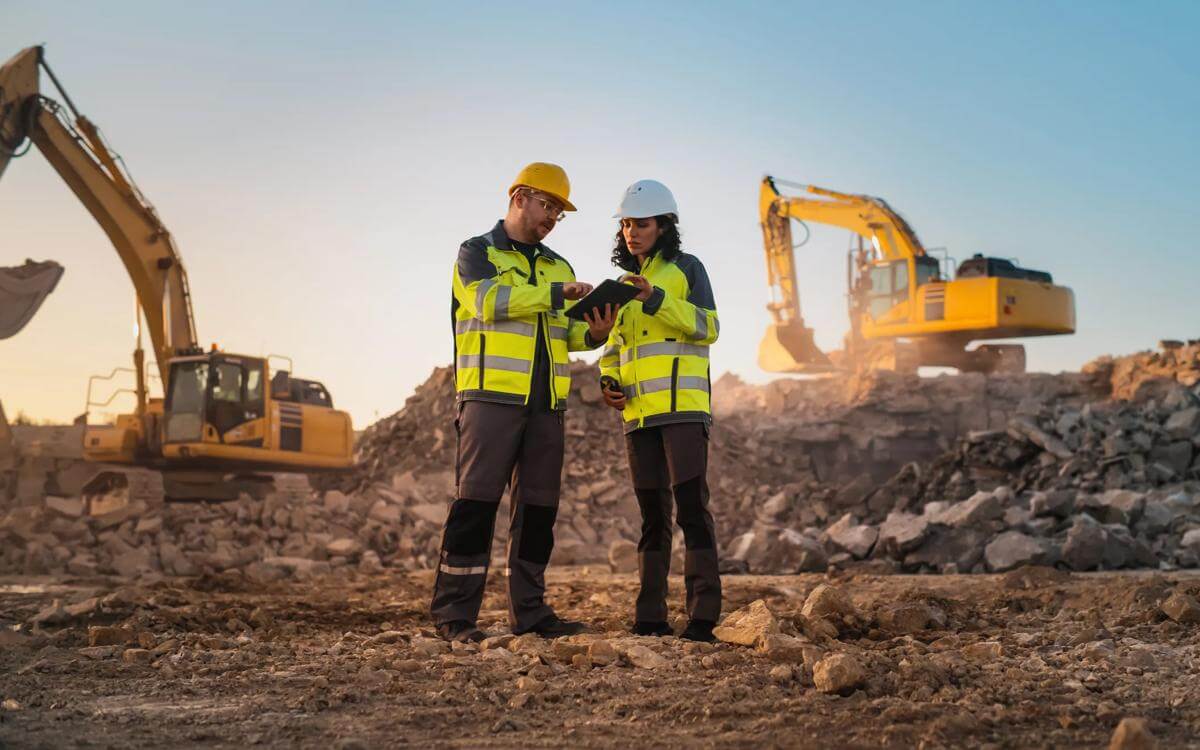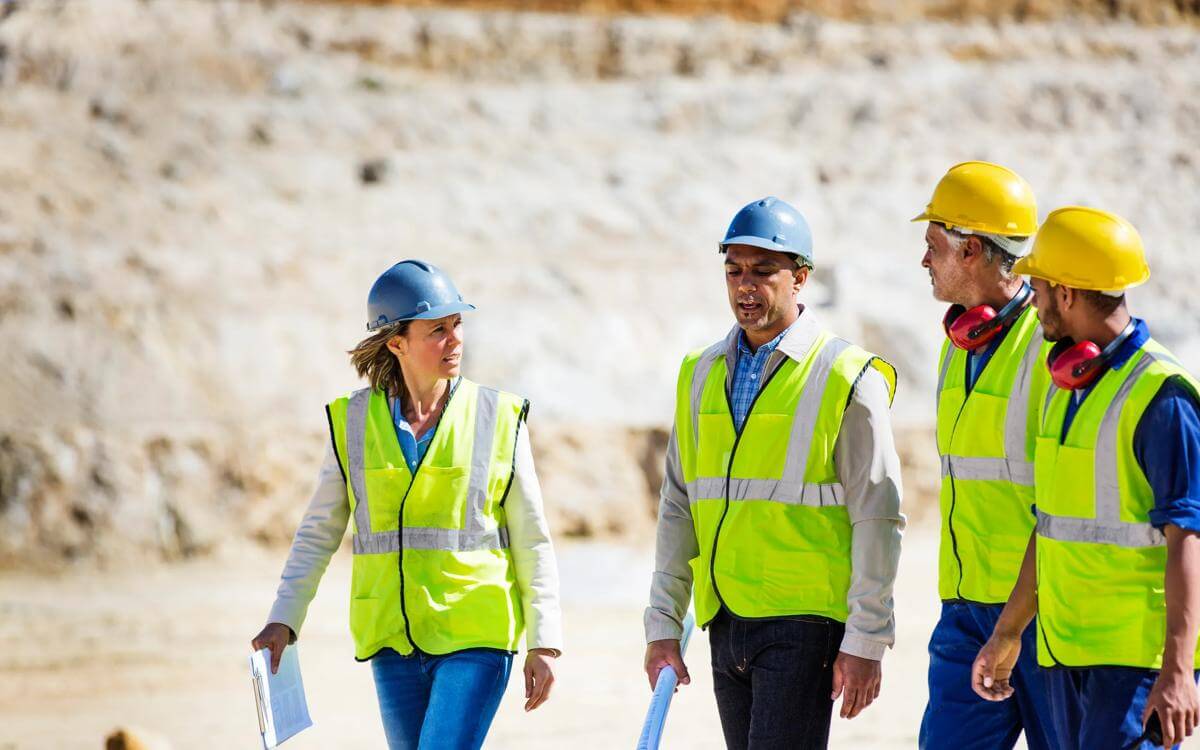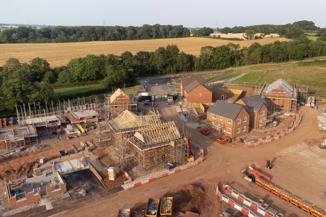2022: Horizon scanning in construction
We look forward to some of the construction industry themes that are likely to dominate 2022, both in terms of the underlying causes and the legal issues that arise out of them.
Continued material and labour shortages, leading to more disputes
Disruptions to the global supply chain have been widely reported, with extremely high demand for globally traded products resulting in extended lead times and sharp cost rises for some imported products since Autumn 2020, and increased transport costs, partly due to the sharp recovery in UK and global construction.
There also remains a significant shortage of skilled labour in the industry.
When combined with the evidence that at the height of the pandemic, contractors were bidding low for work to ensure turnover, jobs that were already on a razor-edge are now well into the red, whilst even contractors who bid sensibly will be facing price inflation.
The legal issues that arise from this arise impact both new contracts and existing ones.
For new contracts, one way of addressing fluctuating prices is to include so-called rise and fall clauses, setting out the way in which price fluctuations will be dealt with.
We have also seen contractors seeking to include additional relevant events and loss and expense (or compensation events in the NEC form) for delays in obtaining certain materials (e.g., cladding panels or sealed glass units) on the basis that they consider the dates they are being given by suppliers are not likely to hold, and they need to protect against this upstream with the employer.
However, such clauses are - generally - resisted, with employers generally requiring price certainty, but this can in some circumstances lead to negotiations breaking down if the consequences are severe enough and neither party will bear the risk.
For existing contracts, any main contractor who faces a potential significant hit to margins will look first to address this upstream with the employer — using whatever contractual levers are available to it — or if that fails try to pass such costs to firms lower down in the chain. The result of all this is an increase in disputes.
Skilled labour shortages will also create problems. We know from experience that boom times in construction can cause problems, with contractors struggling to put the requisite quality of staff onto jobs, leading to an increase in defective work on projects.
Some defects will be discovered during the project, causing disputes prior to completion as contractors seek to avoid the need for rework (and the LADs that will almost certainly follow), whilst others will not, causing issues years down the line (which may well prove more expensive / problematic given the potential for this to add in claims for business interruption).
Cladding / fire safety
Numerous disputes continue as a result of the issues uncovered following the Grenfell tragedy in 2017, with parties still contesting the extent to which the design and / or construction of cladding complies with the Building Regulations in place at the time of practical completion.
However, despite the huge focus on this issue over the past four and a half years, issues remain, not least those highlighted by Jonathan Sakula, a façade expert appointed by the Grenfell Inquiry to answer questions about industry knowledge between 2012 and 2017. In particular:
- There remains a lack of clarity in the Regulations, and of course this not only continues to muddy sign off of cladding on new buildings or refurbishments, but also makes the resolution of disputes difficult.
- More concerning is that there remains a lack of awareness within the industry of the Regulations themselves (see e.g. Building A Safe Future) - an astonishing position given the publicity of the issues.
- More widely, there is evidence that the industry retains a focus on cost over quality and safety, which has long been a problem at both supplier and employer level and - fire safety aside - a traditional cause of disputes in the industry.
- Indeed, our experience is that - as flagged in Building A Safe Future - unfortunately fire safety issues on many buildings are not limited to cladding.
Whilst, given the publicity, cladding is often the starting point for many investigations, often a wider review uncovers issues with e.g. poor installation of fire barriers and the lack of sealing of penetrations, etc.
The issues sadly seem to exist at many levels, ranging from supply (e.g., 30 minute fire doors not achieving specification), through to errors in design and installation.
Unfortunately, all of this suggests that as new buildings go up, and cladding is replaced on old buildings, there is by no means any guarantee that what is installed will comply with Building Regulations.
Indeed, we are aware of some projects where the original cladding was subject to a dispute about compliance with the Regulations, and where an agreed remedial was then installed, but that the pre-agreed solution is now being challenged also…
The Building Safety Bill
Arising out of the above, there has been an abundance of commentary surrounding the new draft Building Safety Bill (the Draft Bill).
The Draft Bill is due to take full effect until 2023 and will introduce new — enhanced — regulatory regimes for building safety in England and Wales, and for construction products throughout the UK.
It will also make related changes to fire safety regulation for all buildings in England and Wales. The government described the reforms as “the biggest changes to building safety regulation in a generation” and says that the Draft Bill “will set out a clear pathway for the future on how residential buildings should be constructed and maintained”.
We comment briefly on some of the key aspects of the Draft Bill.
New Building Safety Regulator
The Draft Bill introduces a new Building Safety Regulator (BSR), who will implement and oversee a new, more stringent regulatory regime with particular emphasis on “higher-risk buildings” (being either (a) at least 18 metres in height or having at least 7 storeys; or (b) as specified in regulations made by the Secretary of State).
The BSR will in practice operate as a division of the Health and Safety Executive. Notably, for higher risk buildings, only the BSR will be able to act as the building control body, removing the choice that previously existed.
The Draft Bill contains detailed provisions catering for situations where planned or ongoing work is altered so that the regime for higher-risk buildings applies part way through the building control process.
New responsibilities for dutyholders — the “golden thread”
The Draft Bill creates a framework under which the government can introduce a new regime, which will impose more prescriptive and onerous obligations on ‘dutyholders’, being those persons responsible for commissioning, designing and building a construction project.
The government is seeking to do this by introducing a requirement “to create and maintain a golden thread of information”. The golden thread is both:
- the information about a building that allows someone to understand a building and keep it safe; and
- the information management to ensure the information is accurate, easily understandable, can be accessed by those who need it and is up to date.
The government says that the Bill will make clear that the dutyholders are responsible for ensuring that the building is designed and built (or refurbished) to be safe and compliant with building regulations, and that the new duties “will embed standards of competence and behaviours within the project, reinforce individual and collective responsibility, and require the key dutyholders to work together and share information to ensure compliance with building regulations”. The proposed changes will require dutyholders to satisfy specific competency requirements.
Whilst the dutyholders are derived from the existing CDM Regulations, as presently drafted it appears that there will be a greater burden imposed on dutyholders than previously - whilst currently dutyholder obligations are often caveated with the requirement to comply only “so far as is reasonably practicable”, the Draft Bill does not limit obligations in this way.
More generally, the Draft Bill creates various new obligations and requirements:
- Applying throughout a building’s life cycle;
- Relating to the competence of those involved with buildings (including residents);
- Providing means of enforcement for breach, including criminal sanctions, together with an extension of the limitation period for civil actions; and
- Relating to the financing of construction, being a developer levy that must be paid before construction begins.
- Provides some — limited — protection for leaseholders in terms of their liability for the cost of remedial work.
- Proposes changes to the rules governing architects’ competence, fire safety legislation and construction products.
- Creates a framework for the New Homes Ombudsman, designed to offer recourse to owners of defective new-build homes.
The Draft Bill is undoubtedly important, and is perhaps the beginning of [much needed] wider reform, not least it is estimated that problematic cladding has left some 700,000 people living in dangerous flats, and some 3 million in homes they cannot sell.
Limitation
However, there are some elements of the bill causing apprehension both within the construction industry and also insurance, most obviously the proposed extension of the limitation period.
The Draft Bill changes limitation periods by
- extending the limitation period from 6 years to 15 years for claims under the Defective Premises Act 1972 (the DPA 1972); and
- separately extending the limitation under section 38 of the Building Act 1984 (BA 84), also from 6 to 15 years.
However, the changes have been criticised as being cosmetic rather than addressing the underlying issues:
- Whilst the purpose of the change is in part to help homeowners who may only have identified the fact of the problem after the claim was already out of time, it does not address the underlying issue of those leaseholders not having the money to fund an action in the first place, let alone the fact that any claim is likely to be against developers with deep pockets, better placed to fight a lengthy legal battle.
- The extensions also do not address the question of who will ultimately foot the bill in the event of a successful claim. At least some defendants will not have the means to pay out in the event of a successful claim, and at the same time most professional indemnity policies now include some form of restriction relating not only to cladding, but fire safety generally, with blanket exclusions for fire safety now being commonplace (indeed, many companies involved in cladding are unable to obtain any insurance at a commercially viable price, and have moved to a captive insurance approach).
Given PI policies exist on a claims-made basis, there is a real risk of successful claims resulting in limited pay outs (insurance is not available for defective work where the design was compliant). Similarly, PI policies may exclude claims arising from works carried out prior to the retroactive date, whilst aggregate limits may be eroded if there is an influx of new claims (assuming they are covered at all).
The above suggests that the limitation period extension may not open the floodgates in terms of claims as initially feared, but only because the Draft Bill leaves numerous issues unresolved.
Looking at this through the other end of the lens, it seems inevitable that claims brought 15 years after completion of a project - and perhaps in circumstances where limitation periods had previously expired - will mean that personnel involved in a project will have moved on from the construction firm.
This will make it difficult, perhaps impossible, for firms to speak with those involved on the project at the time, or obtain the relevant documents (which may well have been destroyed in accordance with document retention policies), giving rise to potential injustices.
In the meantime, it requires potential defendants to review - urgently - document retention policies.
More recently, Michael Gove has of course signalled that he is ‘coming for developers’, and we don’t yet know what that will mean in practice. Accordingly, as the Draft Bill progresses through Parliament (and perhaps since recent evidence demonstrates that the present government is happy to introduce important changes to legislation at the last minute), it seems that further changes are likely. Watch this space…
Decarbonising the construction sector
Last year’s COP26 summit reminded everyone of the ever increasing need to address climate change. In the UK, this brought the Government’s Net Zero target - due in 2050 - into focus.
In order to achieve this, the construction industry must play its part, given that the built environment and construction sector accounts for almost 40% of global carbon emissions.
This therefore requires focus not only on improving practices on new buildings, but also on refurbishing existing buildings to improve efficiency and carbon footprints, with numerous practical measures already existing to reduce carbon footprint, including, but not limited to:
- more holistic and efficient building designs;
- sustainable and focused selection of materials (identified as the widest immediate area for reducing climate impact);
- utilising non-fossil fuel powered machinery (including both vehicles and plant) and reducing the idling of non- renewable machinery;
- better waste management (reduce, reuse and recycle);
- and securing early and high- capacity electricity grid connection, minimising the need for generators.
However, whilst many such measures are often desired by Employers - and are proffered by Contractors/Consultants during tender discussions - it is only with contractual teeth that there will be incentive for them to be consistently implemented.
To date, most environmental adjustments to contracts have been contained in the technical - rather than purely legal - documents. Whilst this makes sense given their function, further thought may now need to be given to the legal terms as a way of incentivising compliance with climate specific targets and requirements. In particular, employers may seek to adjust the legal terms in the following ways, by way of both “carrots” and “sticks”:
- Applying specific Key Performance Indicators (KPIs) with a combination of penalties for failing to comply (e.g., liquidated damages, reduced payments or even termination rights) and incentives for compliance or exceeding the targets (e.g., additional payments);
- Supply chain management - requiring main contractors to impose sustainability requirements on its subcontractors, including KPIs, and requiring more visibility of sub-contract terms;
- BREAM — including requirements for specific BREAM scores to be achieved as a condition precedent to practical completion, and an increase in the appointment of specific BREAM Consultants on projects; and
- Materials — it has long been a standard amendment to include a requirement for materials to be new (unless specified otherwise in the technical documents). We could move to have the default being the use of recycled materials, save where this would negatively impact on performance or the designed aesthetic.
In the coming months and years, there may also be a shift towards modular building and other forms of off-site construction.
The benefits being the reduction of (a) construction waste; and (b) over-ordering and over specification of materials; and the associated transport impact.
There could also be an increase in the use of Framework Building Contracts or even Alliancing Frameworks which provide a cross-project view and aspect to the workings of a project team.
PFI / handback
The next couple of years will see an increased interest in schemes under the Private Finance initiative with the Infrastructure and Projects Authority (IPA) having issued guidance (e.g., the Risks of PFI Contract Expiry 16/08/21) that plans in readiness for handback at the end of the Project Term should be commenced seven years before handback rather than 12 or 18 months of the detailed plans in the Project Agreements.
There is a “bunching” of scheme end dates in the period 2028 — 2037 which means the plans for the earlier of the schemes should be being prepared in 2022 (if not already prepared).
The good news is that the IPA is offering support to contracting authorities, but unfortunately the lack of resource deployed in managing these contracts in the last couple of years (due to stretched finances, staff absences / unavailability, and the general focus on more urgent issues) means that many of these projects are in need of a complete overhaul before preparations can be made for handback.
This overhaul will often involve updating the Project Agreement to reflect any variations, and the situation that has developed on the ground, paired with a survey of the service being delivered against the service standard and the condition of the assets.
The outcome of these surveys and the document update is likely to uncover many disputes and disagreements which have until now remained hidden, all of which will need to be resolved before clear agreements can be reached between the contracting authority and the PFI Provider as to the programme of works necessary to deliver the assets in the required contractual condition at the handback date.
It must always be remembered that the Project is delivered by a Special Purpose Vehicle (SPV) which will have hopefully repaid the Funder well before Handback and if the work necessary to bring the asset back to the specified condition exceeds the SPV’s financial return it may be tempted to default. This scenario is a compelling reason to sort out any disputes as early as possible and before the SPV’s interest is diminished.
Contact

Tim Claremont
Partner
tim.claremont@brownejacobson.com
+44 (0)20 7871 8507








































